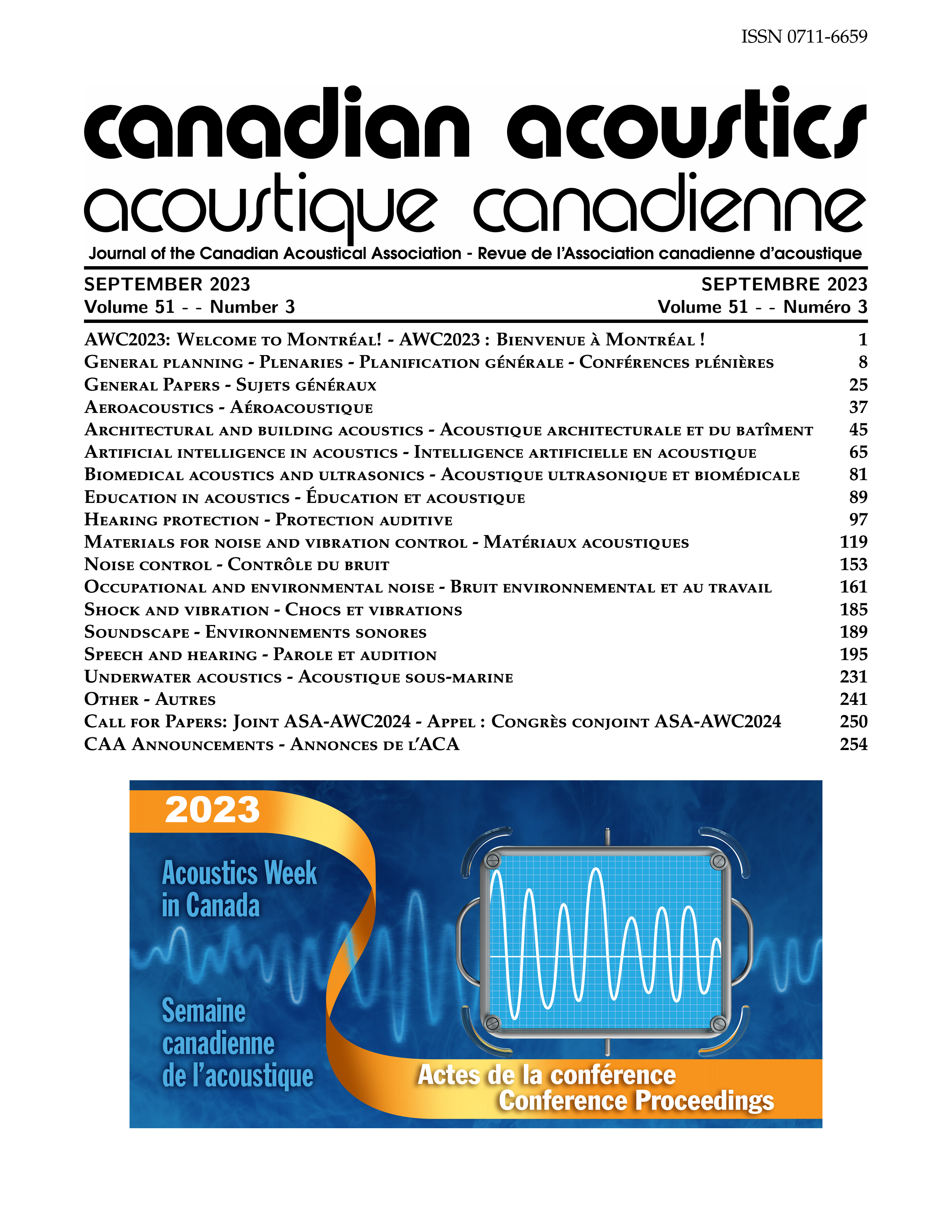Assessment of Equivalent Properties for Multilayered Panels
Résumé
The use of lightweight complex heterogeneous structures increased during the last years principally in the transportation sector (i.e., aviation and trains). This sector’s technology enhancement pursues reducing long-term CO2 emissions and increasing efficiency. Lightweight structures may have poor vibro-acoustic behavior and in designs with complex shapes and material heterogeneities, its vibro-acoustic modeling brings new challenges in terms of accuracy and computational cost. Techniques such as model order reduction, homogenization, mesh and meshless methods (with and without periodicity conditions) and energy methods are typically employed to tackle this problem. Within homogenization techniques, an equivalent properties strategy can be utilized to equivalently represent complex structures into more simple ones (for example, a single layer panel). The latter is named equivalent structure or carrier and it is responsible for representing certain conserved quantities of the original structure. This work aims to stress the use and limitations of two equivalent properties strategies applied to multilayered structures. Limitations provide insight into the potential applicability of these strategies in complex structures. In the first strategy, the carrier is represented by a single layer isotropic plate. Five frequency dependent equivalent properties (elastic and shear moduli, Poisson ratio, thickness and density) are obtained using the first three wavenumbers of the original structure. In the second one, the carrier is a thin orthotropic plate. Heading-angle-dispersion curves of the firstthree waves of the original structure areapproximated as an ellipse. From the latter, the frequency dependent equivalent parameters (in-plane and out-of-plane stiffness coefficients) are obtained. To verify the effectiveness of both strategies, five comprehensive examples of multilayered structures (an orthotropic single layer panel, isotropic and orthotropic sandwich panels and a fully asymmetric multilaminated) are presented. The effect of damping is also analyzed in the case of a sandwich panel with a viscoelastic core.Fichiers supplémentaires
Publié-e
Comment citer
Numéro
Rubrique
Licence
Author Licensing Addendum
This Licensing Addendum ("Addendum") is entered into between the undersigned Author(s) and Canadian Acoustics journal published by the Canadian Acoustical Association (hereinafter referred to as the "Publisher"). The Author(s) and the Publisher agree as follows:
-
Retained Rights: The Author(s) retain(s) the following rights:
- The right to reproduce, distribute, and publicly display the Work on the Author's personal website or the website of the Author's institution.
- The right to use the Work in the Author's teaching activities and presentations.
- The right to include the Work in a compilation for the Author's personal use, not for sale.
-
Grant of License: The Author(s) grant(s) to the Publisher a worldwide exclusive license to publish, reproduce, distribute, and display the Work in Canadian Acoustics and any other formats and media deemed appropriate by the Publisher.
-
Attribution: The Publisher agrees to include proper attribution to the Author(s) in all publications and reproductions of the Work.
-
No Conflict: This Addendum is intended to be in harmony with, and not in conflict with, the terms and conditions of the original agreement entered into between the Author(s) and the Publisher.
-
Copyright Clause: Copyright on articles is held by the Author(s). The corresponding Author has the right to grant on behalf of all Authors and does grant on behalf of all Authors, a worldwide exclusive license to the Publisher and its licensees in perpetuity, in all forms, formats, and media (whether known now or created in the future), including but not limited to the rights to publish, reproduce, distribute, display, store, translate, create adaptations, reprints, include within collections, and create summaries, extracts, and/or abstracts of the Contribution.


